Sometimes the location of our foot pain can help us determine what injury or condition is causing that pain. Here are the locations of the foot where the pain may be felt, and some of the corresponding injuries and conditions (some of which may be felt in more than one area):
Top of Foot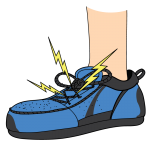
Pain in the top of the foot can often be caused by wearing shoes that are too tight. Switching out for a pair of shoes that fit properly should fix this problem. People who wear high heels a lot can also experience top of foot pain, in which case, they should try to wear comfortable shoes when they can.
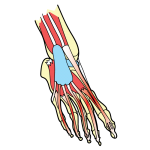 Pain in the top of the foot can also be caused by something more serious, like stress fractures. These are small breaks or cracks in bone, which are common among athletes who do a lot of repetitive jumping, kicking and running.
Pain in the top of the foot can also be caused by something more serious, like stress fractures. These are small breaks or cracks in bone, which are common among athletes who do a lot of repetitive jumping, kicking and running.
If the pain feels like it is radiating down to your toes or coming up from your toes, you may have tendonitis. This occurs when the tendons on the top of your foot (and possibly going down to your toes) become irritated and inflamed, and is likely caused by some type of overuse or outside force pressing down (like tight footwear).
Side of Foot
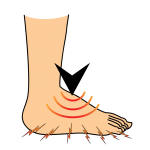 Pain in the side of the foot can be caused by a variety of injuries and conditions. One of the most common causes is tendonitis. The tendons on the side of your foot and ankle may be causing the pain because they are inflamed. An ankle sprain or a case of Cuboid Syndrome may also be likely.
Pain in the side of the foot can be caused by a variety of injuries and conditions. One of the most common causes is tendonitis. The tendons on the side of your foot and ankle may be causing the pain because they are inflamed. An ankle sprain or a case of Cuboid Syndrome may also be likely.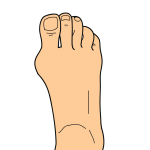
Make sure you don’t have any corns, calluses or bunions on the side of your feet, as these are a common source of pain as well.
Like with the top of the foot, stress fractures can occur in the side of the foot as a result of repetitive strain.
Tarsal Coalition, a congenital disorder, is probably less likely.
Bottom of Foot
Pain in the bottom of the foot (also called the arch or the sole of the foot) is usually caused by Plantar Fasciitis. This is a condition that causes tiny tears in the ligament where it attaches to the heel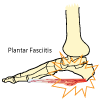 bone. If you are experiencing bottom of foot pain and you spend extended periods of time on your feet, there is definitely a chance that you could have Plantar Fasciitis.
bone. If you are experiencing bottom of foot pain and you spend extended periods of time on your feet, there is definitely a chance that you could have Plantar Fasciitis.
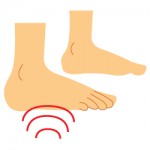 Having flat feet or arches that are higher than usually can put unnecessary strain on the bottom of the foot, leading to pain.
Having flat feet or arches that are higher than usually can put unnecessary strain on the bottom of the foot, leading to pain.
Like with the other areas of the foot, stress fractures can also occur along the bottom of your foot.
Often confused with Plantar Fasciitis, Tarsal Tunnel Syndrome can also cause pain in the bottom of your foot, which is caused by compression of the tibial nerve.
Toe(s)
Conditions such as Hammer Toe and Claw Toe are two of the most common causes of toe pain.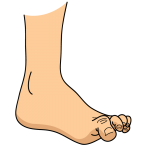
For people who are heavily into sports, Turf Toe is a likely the culprit. People with Turf Toe will usually notice some bruising and swelling as well.
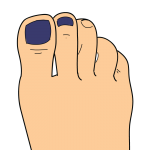 Black Toenails, or Runner’s Toe, is caused by the top of the shoe hitting the toenail while running, but should not cause as much pain as something like Turf Toe.
Black Toenails, or Runner’s Toe, is caused by the top of the shoe hitting the toenail while running, but should not cause as much pain as something like Turf Toe.
Gout can also cause toe pain and is most likely to begin in the big toe. Other signs of gout in the toe include swelling, tenderness, redness and warmth.
Heel
Heel pain is most often caused by Achilles Tendonitis, which occurs when the Achilles Tendon has been overstretched (or has tears in it) due to overuse.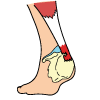
Another common cause of heel pain is something called a Heel Spur. A Heel Spur is a bony calcium deposit that forms on the bottom of your heel and irritates the surrounding tissues.
 Since the tears associated with Plantar Fasciitis occur where the fascia connects to the heel bone, is normal to feel heel pain with Plantar Fasciitis.
Since the tears associated with Plantar Fasciitis occur where the fascia connects to the heel bone, is normal to feel heel pain with Plantar Fasciitis.
If your child is experiencing heel pain, this could be caused by
Sever’s Disease, which occurs when the growth plate in the heel becomes inflamed. This is especially common among active kids and teens between the ages of 8-15.
Heel Bursitis (also known as Retrocalcaneal Bursitis) occurs when the bursa in the back of your heel becomes inflamed, causing pain and swelling.
While the above guide can help give you an idea of what might be causing your foot pain, you should always see a doctor to receive an official diagnosis.